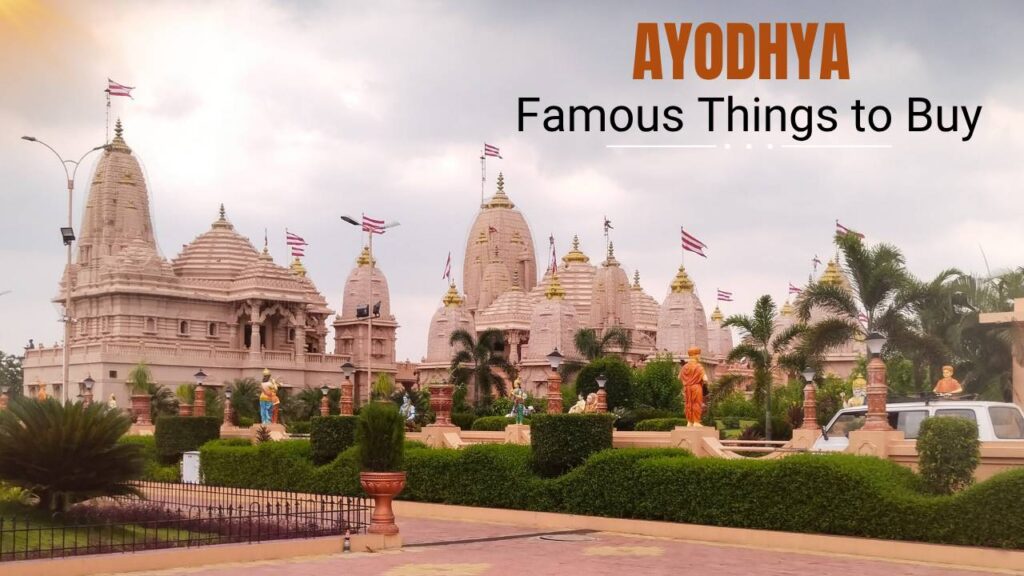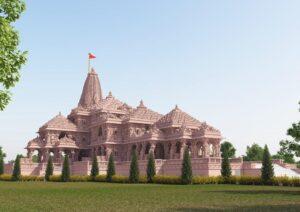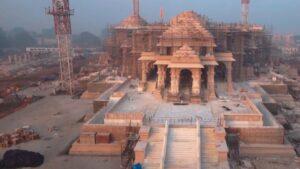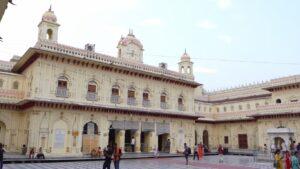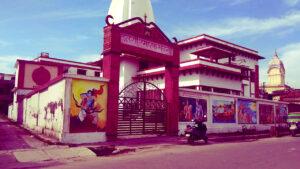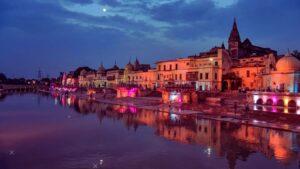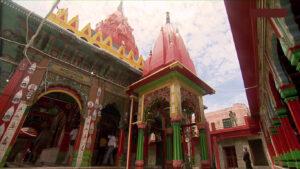Ayodhya, known as the birthplace of Lord Rama, stands as a city rich in spirituality, history, and culture. It draws countless pilgrims and travelers who come not only for blessings but also to visit its vibrant markets filled with traditional crafts, religious artifacts, and cultural souvenirs. Whether you visit as a devotee or a curious traveler, you will know many items that perfectly capture the essence of your journey.
This helps you visit the Ayodhya famous things to buy, ensuring your shopping experience remains authentic and fulfilling. From handcrafted idols to rare scriptures, Ayodhya’s markets offer something special for everyone.
Best Times of Year to Shop in Ayodhya’s Markets
Enjoying shopping in Ayodhya the most when the weather feels comfortable and the city buzzes with festivals, creating a unique and lively atmosphere. The best months to shop are from October through March, when the climate stays cool and pleasant, ideal for wandering through bustling bazaars and open-air markets.
During this period, Ayodhya hosts major religious festivals like Diwali, the festival of lights, which transforms the city into a glowing spectacle. Vendors set up vibrant stalls offering special festival items that add to the excitement.
Ram Navami, the birth anniversary of Lord Rama, marks one of the biggest shopping events. The city welcomes a surge of pilgrims and vendors, who bring exclusive religious items, special edition books, and beautifully crafted idols. Shopping during these festivals gives you access to unique products while allowing you to witness traditional performances, religious processions, and savor local delicacies, enriching your cultural experience.
Keep in mind that festivals bring crowds and sometimes higher prices. If you prefer quieter shopping and better deals, visit just before or after these peak times. Vendors often offer discounts and more flexible bargaining during off-peak periods.
Avoid shopping in the summer months (April to June) when the heat can be overwhelming. The monsoon season (July to September) brings heavy rains that make exploring outdoor markets difficult.
List of Famous Things to Buy in Ayodhya
Ayodhya’s vibrant markets are more than just shopping destinations—they’re a cultural and spiritual experience. Renowned for its deep mythological roots and as the birthplace of Lord Rama, the city is a sacred hub for pilgrims and curious travelers alike. The items sold here are steeped in religious symbolism and traditional artistry.
Below is a detailed list of the top 10 Ayodhya famous things to buy, each representing the city’s divine legacy and heritage craftsmanship.
1. Handcrafted Religious Idols and Statues
In Ayodhya, artisans handcraft divine idols with remarkable precision, keeping spiritual traditions alive through art. These statues, especially of Lord Rama, Sita, Lakshman, and Hanuman, come in various materials such as brass, white marble, black stone, terracotta, and fragrant sandalwood. The attention to detail—like the positioning of hands in blessing gestures or facial expressions of calm—makes them unique.
You can buy idols suited for personal prayer corners or large statues for temples and ceremonial use. Some pieces also depict scenes from the Ramayana, such as Rama’s coronation or Hanuman bowing before Lord Rama. Many devotees believe installing these idols at home not only enhances spirituality but also attracts prosperity, peace, and protection from negative energy.
2. Tulsi Beads and Japa Mala for Meditation
Tulsi (holy basil) holds a revered place in Hindu households and is considered an earthly manifestation of Goddess Lakshmi. In Ayodhya, you’ll find Tulsi beads crafted into japa malas (rosaries) used for chanting “Ram Naam” and other sacred mantras.
Craftsmen polish and string the beads carefully, ensuring they retain their natural sanctity. Some malas include silver-plated beads or beautifully woven tassels, often used in Ramcharitmanas patha or Hanuman Chalisa recitations. Wearing a Tulsi mala is believed to protect from evil energies, regulate thoughts, and keep the mind focused during meditation. You can also find bracelets, rings, and keychains made from Tulsi wood—ideal for spiritual gifting.
3. Religious Books and Illustrated Scriptures
Ayodhya serves as a treasure trove for spiritual seekers and scholars. You’ll find authentic religious texts like the Ramayana, Ramcharitmanas, Bhagavad Gita, Puranas, and Upanishads, available in Hindi, Sanskrit, English, and other Indian languages.
Many shops sell pocket-sized versions for travel, as well as large illustrated editions perfect for home altars or gifting during spiritual ceremonies. Some books feature beautiful depictions of episodes from Lord Rama’s life, helping children and first-time readers connect visually. If you’re looking to dive deep, annotated versions with interpretations by saints and scholars provide profound insights into dharma, devotion, and righteousness.
4. Ayodhya’s Traditional Sweets – Prasad and Delicacies
The sweet shops in Ayodhya are legendary. You’ll find Peda, a soft milk sweet often distributed as temple prasad, made fresh with khoya and cardamom. Kaju Katli, a silky-smooth cashew sweet, and Imarti, a crunchy, syrup-drenched dessert made with urad dal, are must-tries.
Sweets here aren’t just for indulgence—they carry religious importance. Locals offer them to deities and distribute them during Ram Navami and Diwali celebrations. You can also taste seasonal specialties like Til Ladoo during winter and Besan Barfi during Navratri. Most sweet shops pack them in decorative boxes—perfect for taking back as gifts for loved ones or as blessed offerings for your home.
5. Handmade Incense and Dhoop Sticks – For Divine Fragrance
Ayodhya’s incense sticks (agarbatti) and dhoop cones are handcrafted using organic materials like sandalwood powder, frankincense, rose petals, and camphor resin. These natural fragrances purify the air and create a calm, divine atmosphere ideal for daily prayer, meditation, or even yoga.
You can choose from a wide variety of scents—chandan (sandalwood), gulab (rose), lavender, mogra, and even herbal dhoop for Vedic rituals. Some packs also include miniature incense holders or temple-shaped boxes, which enhance their spiritual and decorative value. Many local shops also offer “hawan samagri” (sacred fire offerings), which includes herbs, camphor, and samidha for rituals.
6. Traditional Fabrics and Ethnic Attire
Ayodhya’s fabric market blends devotional symbolism with timeless style. You can shop for handwoven sarees, cotton dhotis, silk kurtas, and colorful dupattas often adorned with religious motifs, block prints, or zari borders.
Many of these garments are ideal for wearing during pujas, yagnas, or temple visits. The textiles reflect regional craftsmanship with techniques like tie-dye (bandhani) and handloom weaving. Tailors in local markets also offer stitching services, letting you customize a garment to your taste. Purchasing these traditional outfits helps support local weavers and keeps the art of religious textile making alive.
7. Brass Pooja Utensils and Ritual Items
Ayodhya’s brass market draws both devotees and collectors. You’ll find beautifully crafted diyas (lamps), ghantis (bells), kalash (pots), and puja thalis engraved with religious symbols like Om, Swastik, and Lotus. These items are vital for any Hindu puja or temple setup.
Many shops also sell kumkum holders, ganga jal containers, and rudraksha boxes. Artisans hand-polish each piece to give it a golden shine that lasts for years. Some stores also offer antique-style brass items with rustic finishes, ideal for heritage-themed decor. Buying these utensils isn’t just about devotion—it’s about preserving traditional metalwork and sacred customs.
8. Handcrafted Wooden Artifacts – Devotional Décor
Ayodhya’s wooden crafts reflect artistic devotion. Artisans carve intricate miniature temples, photo frames, key holders, and wooden jewelry boxes, often featuring carvings of Lord Rama, Hanuman, or scenes from the Ramayana.
Many of these items are made from neem wood, which is believed to have protective qualities in Hindu culture. You’ll also find wall hangings of Rama Darbar and Ram Mandir replicas that make elegant gifts or souvenirs. These beautifully polished items enhance any spiritual or living space with both aesthetic charm and religious energy.
9. Sacred Threads and Designer Kumkum Boxes
Local vendors offer vibrant sacred threads like Raksha Sutra, Mouli, and Janeu, used in various rituals to symbolize purity, protection, and commitment to dharma. Devotees tie these threads during pujas, weddings, or festivals like Raksha Bandhan, believing they safeguard the wearer from evil and negativity.
You’ll also find designer kumkum boxes made from brass, silver, wood, or marble—some even shaped like lotuses or miniature temples. These boxes often come decorated with beads, enamel work, or carvings, making them ideal for gifting during religious functions, weddings, or festive seasons.
10. Ayodhya-Themed Souvenirs – Memories You Can Take Home
Don’t leave Ayodhya without buying souvenirs that capture the city’s essence. You can collect postcards of the Ram Janmabhoomi, wall calendars featuring Rama’s life, custom paintings of Ayodhya’s ghats, and fridge magnets with spiritual quotes.
Ayodhya Ram Mandir: History, Location, Opening Date, Photo!
Miniature models of the Ram Mandir are especially popular, available in various materials like wood, clay, and resin. These items make great gifts and serve as memorable tokens of your spiritual journey. Many vendors also sell photo frames of Rama Darbar, keychains, and temple bells that serve as small yet powerful reminders of your visit to this holy land.
Where to Shop for Authentic Ayodhya Famous Things to Buy
Visiting Ayodhya, knowing where to shop can make a big difference in the quality, authenticity, and spiritual value of your purchases. For handcrafted idols, religious books, or devotional souvenirs, here are the top spots you should visit:
1. Ram Ki Paidi Area – The Spiritual Marketplace by the Sarayu River
Located along the picturesque banks of the Sarayu River, the Ram Ki Paidi area is not just a sacred site but also a vibrant market full of devotional items. This is one of the oldest commercial zones in Ayodhya where traditional artisans run family-owned shops.
Here, you can find handcrafted idols, Tulsi malas, brass pooja items, and wooden temple replicas, all made using techniques passed down through generations. The atmosphere of the area adds to the sanctity—soft chants, the scent of incense, and the sight of riverfront temples create a divine shopping experience.
Most shopkeepers take pride in their heritage and offer personalized recommendations based on your spiritual needs. They often explain the significance of each item, whether it’s the symbolism behind Lord Rama’s posture in an idol or the spiritual meaning of different Tulsi bead arrangements.
2. Dashrath Market – Vibrant Hub for Diverse Devotional Goods
Named after King Dashrath, the father of Lord Rama, Dashrath Market is a bustling commercial center that offers a wide range of goods—from religious books and traditional sweets to colorful fabrics and Ayodhya-themed souvenirs.
This market is ideal for bulk buying and festival shopping, especially during occasions like Ram Navami or Diwali, when the entire area comes alive with decorations and spiritual energy. Vendors here are usually very knowledgeable about the origins and meanings of their products, and they’re happy to guide both first-time tourists and serious collectors.
You’ll also find sellers offering limited-edition scriptures, artist-painted calendars, sacred attire, and even locally made ayurvedic products. Many stalls accept digital payments, making the experience seamless for modern shoppers.
3. Government-Run Emporiums and Authorized Religious Stores
If looking for 100% authentic products and want to avoid the risk of counterfeits, head to government-authorized emporiums or certified outlets affiliated with temples or publishing trusts.
These stores offer a curated selection of religious books, idols, incense, brassware, and handicrafts, each with proper certifications or seals of authenticity. They usually stock scriptures from Gita Press, official Ramayana prints, and pooja items made under strict religious guidelines.
While prices may be slightly higher compared to street shops, you receive assurance of quality, legitimacy, and often eco-friendly materials. These stores are particularly useful for pilgrims and scholars who value accuracy, durability, and official endorsements.
4. Seasonal Fairs and Religious Festivals – Best Time for Artisan Shopping
Ayodhya hosts several religious fairs and annual festivals like Ram Navami Mela, Deepotsav, and Kartik Purnima, during which temporary marketplaces or mela stalls are set up near temple premises, ghats, and public grounds.
These fairs are incredible opportunities to interact directly with rural artisans who bring their exclusive handmade items, such as hand-painted scrolls, Ramayana-themed toys, sacred threads, and decorative household products. Often, these items aren’t available in regular markets.
By purchasing here, you not only ensure the authenticity of your item but also support the local artisan economy. Bargaining is common, but always approach it respectfully, keeping in mind the cultural context.
Tips for Buying Religious Books and Scriptures in Ayodhya
Buying spiritual texts in Ayodhya is a sacred act. These scriptures serve as more than just literature—they’re tools for devotion, meditation, and self-realization. Here’s how to ensure you bring home genuine, valuable editions:
1. Check the Publisher’s Reputation
Always buy from trusted publishers such as Gita Press Gorakhpur, Chowkhamba Sanskrit Series, or temple-affiliated publishers. These names guarantee accuracy in translation, original Sanskrit verses, and proper formatting according to shastric rules.
Reputed publishers follow established printing standards, and their texts often carry ISBN numbers, edition information, and sometimes certification from religious bodies. Ask the seller for guidance on which publisher suits your reading level or devotional goals.
2. Inspect Physical Quality Before Purchase
Look for books with strong binding, thick or glossy pages, and clear font types that are easy to read. A good-quality scripture should not tear easily and should be able to withstand regular handling during rituals or daily chanting.
Some devotional texts come with waterproof or leather-bound covers, gold-leaf-edged pages, or embossed titles—ideal for long-term use or gifting. If you’re buying for elderly users, ensure the font is large and the script is legible.
3. Seek Expert Advice from Local Priests or Scholars
Many temple priests, pandits, or resident scholars in Ayodhya offer free consultations or suggestions regarding which versions or commentaries to buy. Their advice can guide you to editions that match your spiritual level—whether you’re a beginner, devotee, or academic.
Don’t hesitate to ask them for verse-by-verse guides, Sanskrit-to-English translations, or texts tailored for ritual usage like sankalp mantras, aarti books, or stotra sangrah (collection of hymns).
4. Compare Prices and Watch for Festival-Time Inflation
During festive periods, some booksellers may hike prices due to tourist demand. Don’t rush—visit 2–3 stores, compare prices, and bargain politely. Look for bundle offers or combo packs that include Ramayana + Hanuman Chalisa + Aarti Sangrah, often available at better rates.
Also, check if the book includes QR codes or online access, as many publishers now offer digital access to the same text for mobile reading or chanting.
5. Avoid Photocopied or Poor-Quality Prints
Beware of books that lack publisher details, have faded text, crooked printing, or missing pages. These low-quality editions may not just be hard to read but may omit important verses or misinterpret meanings, which defeats the purpose of spiritual reading.
Always flip through multiple pages before buying. If buying from street vendors, ensure they have basic protective covers or sealed packaging.
6. Look for Illustrated or Deluxe Collector Editions
Illustrated editions of scriptures, especially the Ramayana, help readers visually connect with the stories. These books often include artworks from Indian miniature painting traditions, temple murals, or modern devotional illustrations that enhance understanding and devotion.
Many deluxe editions also include commentary by saints, indexes of slokas, and glossaries, making them a valuable addition to any devotee’s library or home altar.
7. Choose Language and Commentary Wisely
Not everyone reads Sanskrit or Hindi. Choose editions in your preferred language—be it English, Tamil, Bengali, Telugu, or others—and ensure the translation is by a renowned scholar or spiritual organization. Bilingual versions are helpful for learners wanting to understand the Sanskrit original with side-by-side translation.
Some editions also include spiritual insights, life applications, and daily reading plans, perfect for devotees practicing regular sadhana or family satsangs.
Top 10 Reasons to Visit Ayodhya!
Buying for devotion, learning, or gifting, follow these insights to make your shopping in Ayodhya a truly fulfilling experience.
FAQs
1. What are the most famous things to buy in Ayodhya?
Ayodhya is known for handcrafted idols of Lord Rama, Tulsi malas, religious scriptures, brass pooja items, Ayodhya-themed souvenirs, traditional sweets like Peda, incense sticks, sacred threads, handmade wooden artifacts, and spiritual garments like dhotis and dupattas.
2. Where can I buy authentic Lord Rama idols in Ayodhya?
You can find authentic and intricately carved idols of Lord Rama, Sita, Lakshman, and Hanuman at Ram Ki Paidi shops, Dashrath Market, and government emporiums. Choose from brass, sandalwood, and marble versions made by skilled local artisans.
3. Which is the best place to buy religious books and scriptures in Ayodhya?
Look for books at authorized stores, temple-run outlets, and sellers affiliated with publishers like Gita Press Gorakhpur and Chowkhamba Sanskrit Series. Dashrath Market is a popular area for buying such scriptures.
4. Are Ayodhya’s Tulsi Malas authentic and handmade?
Yes, most Tulsi malas sold in Ayodhya are handmade from real Tulsi wood, often strung by families engaged in devotional craftwork. You can buy them near temples or Ram Ki Paidi, where sellers may also explain their religious significance.
5. What kind of traditional sweets are famous in Ayodhya?
Ayodhya is famous for Peda (milk fudge), Kaju Katli, Imarti, and Besan Laddu. These are made using traditional methods and are often bought as prasad (holy offering) or gifts for loved ones. Local sweet shops near temples and ghats are the best places to buy them.
6. Is it safe to buy religious items from street vendors?
Yes, it is generally safe, but quality and authenticity can vary. For sacred items like scriptures or idols, it’s recommended to buy from reputed or government-certified stores. Street vendors are great for small souvenirs and decorative items.
7. Can I find illustrated or English translations of the Ramayana in Ayodhya?
Absolutely. Many bookstores and temple-affiliated shops offer illustrated, deluxe, and translated editions of the Ramayana, Bhagavad Gita, and other scriptures. You can find versions in English, Hindi, and regional languages.
8. What is unique about the brass pooja items in Ayodhya?
Ayodhya’s brass items like diyas (lamps), ghantis (bells), thalis (plates), and kalash are often handmade with religious engravings. These items are crafted following traditional techniques and are commonly used for daily worship and temple rituals.
9. When is the best time to shop in Ayodhya for spiritual items?
Festive seasons like Ram Navami, Deepotsav, and Diwali are the best times to shop for rare spiritual items and handmade crafts, as many artisans display their best work during these periods. Seasonal fairs and melas also offer unique finds.
10. Are there fixed prices, or is bargaining allowed in Ayodhya markets?
Bargaining is common in local markets like Dashrath Market and street stalls. In government emporiums and temple-affiliated stores, prices are usually fixed. Always compare prices and bargain politely to get the best deal.
